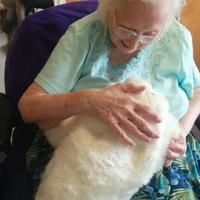Social robots are not something most people encounter in their everyday life and especially not in the UK. Yet, robots seem to be a subject of great interest, and a phenomenon so ubiquitous within popular culture and science fiction that it might seem inevitable that they someday will be a part of life. Discussions of robots are often accompanied with hopes for miraculous new technological solutions to problems particularly in eldercare (Breazeal 2010; Robertson 2007), or on the other hand, dystopic fears of a cold and contactless society.
Studies of social robotics often take place in controlled experimental settings by roboticists focused on how to make the technical aspects of robots work more efficiently, and by psychologists and health personnel measuring therapeutic “effects” such as anxiety relief. These studies can then in themselves become the inspiration for ethical discussions of robotic use, such as the risk of dehumanising elderly people (Turkle 2012). There are not yet many anthropological studies of robots being a part of everyday life. Studies that examine how robots might influence practice, what importance robots will hold over time and how they might play a part in meaningful affectionate relations as imagined by some roboticists (Shibata; Levy 2007). When considering the value of investment in expensive medical equipment, it is useful and important to try and measure benefits; the cost has to be justified. If, however, we think of the elderly in these situations simply as passive recipients of an intervention where benefits can be conceptualised and measured like those of a new drug, there is a risk of stripping them of their agency by prescribing their role as test subjects in need of fixing. An approach to well-being that sees all change as measurable, even if this change includes enjoyment and social interaction as distinct dimensions for measurement, does not capture the totality of a person’s life.
Over the past three months, I have conducted ethnographic fieldwork and brought a ‘socially assistive’ robot named Paro to a care home 4-5 days a week. Paro is a cuddly and charming seal-like robot who responds to touch, light, and sound by moving, blinking her/his eyes, and making seal noises. Paro’s artificial intelligence ensures it adjusts its responses over time. During these months, the activity coordinator, the residents and I have been incorporating Paro into the weekly activity program and “one-to-one” conversations. The activity coordinator and I have been carrying Paro around showing her/him to residents and visitors, and letting them stroke or sit with him/her. I have talked and reflected with residents, family and staff about what and who Paro is, where Paro is from and how s/he is made, and what s/he has come to mean to them. Although Paro is marketed especially toward dementia therapy, and many people have asked me if Paro “works” or “has the effect I expected”, very few people, regardless of age, seem to be able to resist smiling or laughing, or interacting with Paro by stroking and talking with him/her. How people experience Paro is not reflected as an “effect”:
… After telling us a lot about how to care for animals, T, a resident, asks what we do from here. I tell him we were thinking of showing ‘him’ (Paro) to the other residents. As T always offers to help, I ask him if he would like to help us. He takes Paro from my arms and caries him around as I walk next to him. G and C sit next to each other in a sofa and G laughs and pulls Paro’s whiskers when T presents him. "I dunno why, pulling his whiskers always makes me laugh" he chuckles, and Paro says "Uhhh". “He is lovely!” C says, and tries to reach out for Paro. T walks around C’s walker and tries to get Paro into her reach. T then asks me where to go now. I suggestively point to J, who is sitting in a wheelchair with a neutral and perhaps a bit melancholy facial expression. She reaches out for Paro and laughs, touches his nose, looks at me and laughs again. She asks for his name. T looks at me and I answer "Ted" - as decided at the last residents’ meeting - a couple of times. T then walks over to D. "What is it?" she asks. "I dunno," he says. "What exactly is it? I mean, what sorta animal is it?" he asks me. "A seal" I say. "Is it real?" D asks. "It's genuine" T answers.
The process has not been a controlled clinical trial, rather it has been a collaborative exploration of understanding what Paro can actually come to mean to persons living in a care home, and how s/he can contribute to activities in the care home, in what way, and why this is considered important. Although I am the formal researcher, neither I, the staff nor the residents have had a clear idea from the beginning of what was going to happen. This kind of anthropological studies of co-living with robots gives space for staff and the residents for forming their own interpretation of Paro and the methodological space for everyday reflections about life and well-being from both staff, family and the elderly, and on both good and bad days of dementia. This can furthermore help with qualifying our ethical discussions about the development and shaping of this technology. The future needs to be explored and questioned through actual everyday life.
This research study was conducted at Longlands care home, part of The Orders of St John Care Trust (OSJCT).
References
Breazeal, C. (2010, December). Social robots for health applications. In Conference proceedings:... Annual International Conference of the IEEE Engineering in Medicine and Biology Society. IEEE Engineering in Medicine and Biology Society. Annual Conference (Vol. 2011, pp. 5368-5371)
Levy, D. (2007). Love and sex with robots: The evolution of human-robot relationships. Harper Collins.
Robertson, J. (2007). Robo sapiens japanicus: Humanoid robots and the posthuman family. Critical Asian Studies, 39(3), 369-398.
Turkle, S. (2012). Alone together: Why we expect more from technology and less from each other. Basic books.
Opinions of the blogger is their own and not endorsed by the Institute
Comments Welcome: We welcome your comments on this or any of the Institute's blog posts. Please feel free to email comments to be posted on your behalf to administrator@ageing.ox.ac.uk or use the Disqus facility linked below.













